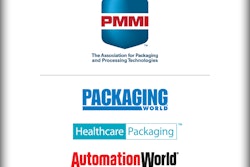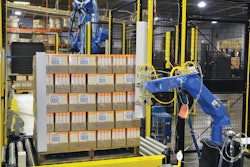
Apple’s September introduction of the iPhone 6, iPhone 6 Plus, and the Apple Watch smartwatch was described by CNNMoney as “one of the most ambitious product launches in its history.”
The watch will include a fitness-tracking feature. Explains Apple “The watch gives you a more complete picture of your all-day physical activity because it measures more than just the quantity of your movement, such as the number of steps you take. It measures the quality and frequency as well. The three rings of the Activity app show your progress at a glance, and provide all the motivation you need to sit less, move more, and get some exercise. There’s also a separate Workout app for dedicated cardio sessions. Over time, AppleWatch can use what it learns about the way you move to suggest personalized daily fitness goals and encourage you to achieve them—so you can live a better day and a healthierlife.”
While the smartwatch may help a patient adhere to an exercise regimen, what apps might help patients adhere to medication regimens prescribed by their physicians? And what role might packaging play in better adherence? Enter the mHealth (mobile health) device.
MEDICA trade fair to unveil apps
How good are the apps for our smartphones and tablet PCs when it comes to health? Experts will discuss that and other topics at the Medica Health IT Forum Nov. 12-15, 2014 in Düsseldorf, Germany.
“M-health and Prevention” will be the focus during Forum 2 on Nov. 13, describing how apps can be used to increase the likelihood of taking medication regularly by generating reminders. However, apps are also being successfully used in the field of individual, community-related and company prevention—even if is only to help employees lead healthy lives, for example.
Medica 2014 will also deal with apps that could help improve the care of hospital patients, patient safety, and cost-effectiveness during a hospital stay.
Supply chain strain
At the Sept. 8-10 Parenteral Drug Assn.’s 2014 PDA/FDQ Joint Regulatory Conference, there was discussion regarding the growing complexity of drug delivery devices. Improved patient adherence/compliance is the goal, but achieving that stresses the design and manufacture of devices and their packaging.
Reporting from the event, Healthcare Packaging Publisher Jim Chrzan noted, “This complexity of design puts additional strain on the supply chain for small motors, electronics, components, etc., as drug manufacturers have to find redundant supply sources around the world. You don't want to NOT have a drug available because your battery supplier had a natural disaster, terrorist incident, or war."
Packaging’s role
When asked about the significance of packaging for mHealth devices for a recent HCP article, Nick Kurkjy, Research Associate, Lux Research, Inc., said, “Packaging is extremely important for both consumer and clinical mHealth devices. On the consumer side, packaging needs to attract customers and show off the device, much like any other mobile consumer electronics device packaging. For clinical mHealth devices, packaging must help ensure the device is sterile and safe to use.”
Diving deeper, he said, “Consumer and clinical mHealth markets have significantly different packaging needs. Consumer mHealth devices often require flashy, attractive packaging to draw consumers in to buy the device. Clinical mHealth devices must have much more functional packaging, including sterile compartments and easy-to-understand instructions to properly address the needs of the patient.” Read the complete Q&A with Kurkjy here.
Within the healthcare community, different terms for patient compliance/adherence are used, sometimes interchangeably. The following definitions come from a presentation slide during a March 27, 2013 CDC conference:
• Medication adherence: The patient’s conformance with the provider’s recommendation with respect to timing, dosage, and frequency of medication-taking during the prescribed length of time.
• Compliance: Patient’s passive following of provider’s orders.
• Persistence: Duration of time patient takes medication, from initiation to discontinuation of therapy.
This slide attributes the information to this source.
Getting patients to stick with prescribed drug regimens is critical. Many of us have seen the alarming statistics related to extended hospital stays, the number of deaths, and the increased costs to the healthcare system as a result of patients not following their medication regimens.
Packaging continues to play a role in alleviating this problem through compliance/adherence-prompting innovations. As consumers worldwide embrace smartphones, smartwatches, etc., advanced mHealth devices and their apps will likely become more sophisticated and useful, and will ideally work in tandem with prescriptions and over-the-counter medication packaging to keep patients healthier as a result of more closely following their medication regimens.


























